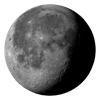HR7764
HR7764 is a multiple main-sequence star of spectral class A4 in the constellation of Sagittarius.
HR7764 visual magnitude is 6.3. Because of its faintness, HR7764 is visible to the naked eye only from locations with very dark skies, while it is not visible at all from skies affected by light pollution.

Celestial Coordinates
Apparent
J2000
Galactic Coordinates
Finder Chart

Magnitude, Color, Spectral Class
The red dot in the diagram below shows where HR7764 is situated in the Hertzsprung–Russell diagram.

Star System Properties
HR7764 is a visual double star which can be observed with binoculars or small telescopes. The table below shows key information about the HR7764 double sysyem:
Distance, Radial Speed, Proper Motion
HR7764 is distant 711.79 light years from the Sun and it is moving far from the Sun at the speed of 4 kilometers per second.
Alternative Designations
Visibility from Your Location
Today's HR7764 rise, transit and set times from Greenwich, UK are the following (all times relative to the local timezone Europe/London):










